by Jon LeSage, editor and publisher, Green Auto Market
Here’s my take on the 10 most significant and interesting occurrences during the past week…….
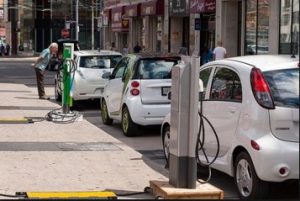 Support for nationwide network: The Obama administration is adding to its support for electric vehicle charging stations with $4.5 billion in U.S. Energy Department loan guarantees. The funds will support a commercial-scale roll out of charging stations, with federal, state and local governments partnering with automakers including Tesla, Ford, GM, and Nissan. The administration aims to complete a national network of fast-charging stations by 2020 to make “coast-to-coast, nationwide zero-emissions travel” easier for consumers. State, county and local governments will be encouraged to buy electric cars for their fleets, lowering procurement costs while expanding the market for the cars. Utilities supporting the infrastructure growth include Berkshire Hathaway Energy, Con Edison, Duke Energy, and Southern California Edison are also involved. Twelve utilities and charging companies have committed to increase their deployment of EVs and charging infrastructure. Supporting programs include DOE’s Workplace Charging Challenge and an EV “Hackathon” this fall to create new solutions for EV charging.
Support for nationwide network: The Obama administration is adding to its support for electric vehicle charging stations with $4.5 billion in U.S. Energy Department loan guarantees. The funds will support a commercial-scale roll out of charging stations, with federal, state and local governments partnering with automakers including Tesla, Ford, GM, and Nissan. The administration aims to complete a national network of fast-charging stations by 2020 to make “coast-to-coast, nationwide zero-emissions travel” easier for consumers. State, county and local governments will be encouraged to buy electric cars for their fleets, lowering procurement costs while expanding the market for the cars. Utilities supporting the infrastructure growth include Berkshire Hathaway Energy, Con Edison, Duke Energy, and Southern California Edison are also involved. Twelve utilities and charging companies have committed to increase their deployment of EVs and charging infrastructure. Supporting programs include DOE’s Workplace Charging Challenge and an EV “Hackathon” this fall to create new solutions for EV charging.- Tesla and SolarCity merger: Tesla Motors and SolarCity negotiated into the weekend on merging the electric carmaker with the solar power company. Tesla CEO Elon Musk has recused himself from voting, serving as chair of SolarCity and working with his cousins SolarCity CEO Lyndon Rive and SolarCity board member Peter Rive, who have also recused themselves from voting. The companies are in the final stages of carrying out due diligence on each other, and could agree on the terms of a deal in the coming days, though it is still possible that their negotiations end unsuccessfully, sources said. Investors and analysts have been concerned about Tesla taking on too much investment in the solar company.
- Debate over agency midterm report: The 60-day comment period on midterm report has flared up debate over how realistic the 54.5 mpg by 2025 really is, being heavily weighted by a surge in light-duty vehicle sales. The 1,217-page draft “Technical Assessment Report” was issued on July 15 by the Environmental Protection Agency, National Highway Traffic Safety Administration, and California Air Resources Board to evaluate the status of hitting the Obama administration’s fuel economy and greenhouse gas emissions goals. The inflated sales of pickup trucks, SUVs, and crossovers coming from cheap gas prices has changed the outlook for the 2025 target closer to 51 mpg than 54.5 mpg.
- Master Plan, Part Deux: In a Wednesday blog post on the Tesla website, CEO Elon Musk outlined a new horizon for electrified vehicles the company will be taking on – heavy-duty trucks, pickup trucks, a small SUV, a buy-type vehicle. Musk also says Tesla will be playing into the Silicon Valley mobility company identity through rolling out autonomous vehicles and a mobile app where Tesla owners could earn income by opening up their electric cars for shared rides. “Master Plan, Part Deux” calls for an electrified future merging solar power, on-site energy storage, carsharing, and electric autonomous cars. The announcement came out in the weeks following Tesla taking heat over a fatal crash involving its Autopilot system; more criticism from Wall Street has come from Tesla missing production and sales targets and being questioned over the merger with SolarCity.
- ZEV sales forecasts: Navigant Research has forecasted growth in zero emission vehicles in two separate reports. The research firm expects the North American plug-in electric vehicle market to grow by around 62% year-over-year in 2016, nearing 200,000 sales. Growth is anticipated to come from expanding sales of the Tesla Model X, the second-generation Volt, and introduction of the Chevrolet Bolt, Prius Prime plug-in hybrid electric vehicle, and Mitsubishi Outlander PHEV later in the year. The report projects that the introduction of the Tesla Model 3 in late 2017 will likely boost the North American PEV market by around 60% in 2017 and then nearly double the market in 2018 after the first full year of Model 3 sales. In a second report, Navigant forecasts that global sales of hydrogen fuel cell cars and buses are expected to total more than 580,000 from 2015 to 2024. “Overall, the driver for FCV activity continues to be the sentiment that a diverse drivetrain mix will be needed if the transportation sector is to shift away from petroleum dependence,”says Lisa Jerram, principal research analyst with Navigant Research.
- Autonomous Facebook flights and Slurpee delivery: Pilotless drone planes are gaining more support from big names like Mark Zuckerberg and 7-Eleven. A small Facebook team has been working on a secret project – sending a high-altitude solar-powered drone plan named Aquila on test flights. The mission statement is to launch of fleet of aircraft that will deliver internet access around the world. Zuckerburg says it’s part of the company’s plan to bring the internet to all 7+ billion people on Earth. Doing so will lift millions of people out of poverty, improving education and health globally along the way, Zuckerberg says. Convenience store king 7-Eleven Inc. and tech startup Flirtey have beaten Amazon to the punch in making the first drone delivery to a customer’s home in the U.S. During the 7-Eleven delivery on July 10 in Reno, Nev., Flirtey successfully transported: Slurpees, a chicken sandwich, donuts, hot coffee, and candy to the home of the family who placed the order. Flirtey is a privately held company based in Reno, which builds and operates drones to make deliveries that are needed in humanitarian and health work, retail and food industries.
- JLR, Ford, and BMW in battery plant talks: Jaguar Land Rover is in talks with Ford and BMW about building a battery plant with the capacity to power several hundred thousand electric vehicles. There’s been no word over whether this plant would be based in the U.K., the U.S., Germany, or another location. The plant would help Jaguar launch its first electric vehicle, and to join other luxury carmakers in a competitive battle with Tesla Motors. Ford has been working with LG and BMW with Samsung as lithium battery suppliers.
- Audi EV strategy: Audi says it will be rolling out three electric models by 2020, and that electric vehicles will make up 25% to 30% of its sales by 2025, CEO Rupert Stadler told a German newspaper. It will be tied into a larger corporate strategy to focus more on resources on electric cars, digital services, and autonomous driving. The rollout of electric cars will also include small vehicles in the A-(minicar) segment. The company will also set up a subsidiary, to be called SDS Co., to develop an autonomous car.
- Quantum has new ownership: Quantum Fuel Systems Technologies Worldwide is emerging from its bankruptcy through acquisition by Douglas Acquisitions LLC, an affiliate of second-position secured creditors. Quantum, based in Lake Forest, Calif., had shifted its focus to selling natural gas fuel tanks in recent years. The company recently received a delisting notice from NASDAQ. Quantum filed for Chapter 11 bankruptcy protection in late March and sought a buyer through a “363” sale process, which is essentially an asset sale. The company will be renamed Quantum Fuel Systems LLC.
- EVs strong in used car sale days on the lot: Plug-in electric vehicles led the way in one-to-three year old used car sales during the first half of this year, according to iSeeCars.com. The fastest selling used car in the U.S. was the Toyota Prius plug-in hybrid, taking just 19.7 days to move. It was followed by the Nissan Leaf at 24.3 days and the Tesla Model S at 26.1 days. More than half of these cars were sold in California, where the diamond lane, HOV carpool lane stickers made them more attractive to used car buyers.


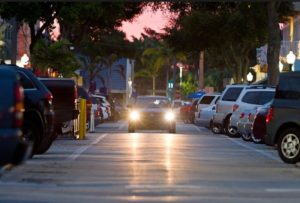 In the not-too distant future, parking cars in crowded cities is expected to improve drastically. Self-driving cars will drop off riders and take care of the parking. Automated parking systems (APS) are starting to provide parking for cars on multiple levels stacked vertically to maximize the number of parking spaces while minimizing land usage.
In the not-too distant future, parking cars in crowded cities is expected to improve drastically. Self-driving cars will drop off riders and take care of the parking. Automated parking systems (APS) are starting to provide parking for cars on multiple levels stacked vertically to maximize the number of parking spaces while minimizing land usage.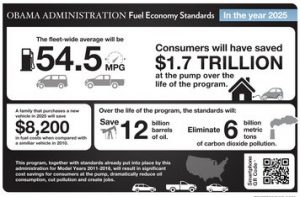 Midterm mpg report: Hitting the 54.5 mpg target by the 2025 model year
Midterm mpg report: Hitting the 54.5 mpg target by the 2025 model year 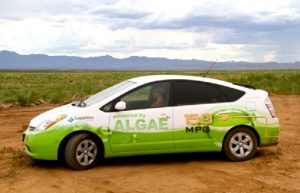 A few years ago, algae biofuels and oils looked like ideal options for the future of clean transportation. For those objecting to corn-based ethanol, or concerned about traditional biodiesel, algae fuel was showing a lot promise for passenger cars and commercial vehicles. Appealing factors have included emission reductions and the ability to tap into the renewable fuels and oils through plants.
A few years ago, algae biofuels and oils looked like ideal options for the future of clean transportation. For those objecting to corn-based ethanol, or concerned about traditional biodiesel, algae fuel was showing a lot promise for passenger cars and commercial vehicles. Appealing factors have included emission reductions and the ability to tap into the renewable fuels and oils through plants.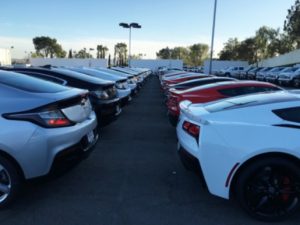 Top sales month ever: June saw the
Top sales month ever: June saw the 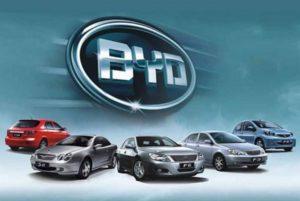 There continues to be a symbiotic relationship between the U.S. and China in plug-in electric vehicle manufacturing, sales, and technology development. Government subsidies are helping bring sales up, as are introductions of new models that are gaining more interest from consumers in both China and the U.S. More EVs are coming in the near future, and in more type classes, including a minivan and crossover SUVs in the U.S. market and diverse offerings in China. The Beijing Motor Show in April and May showed off an intriguing lineup of new EVs rolling out from BYD, Changjiang, Dongfeng, Brilliance, Beijing Auto, Changfeng, JAC, and others. The symbiotic relationship comes from alliances between global automakers and Chinese companies for EVs to be sold in China and eventually in other markets; and between the Chinese and American governments pushing for clean technologies and emissions reductions. There’s also a list of manufacturers and suppliers based in the U.S. that are building electric cars and technologies that will be shipped overseas and sold in China.
There continues to be a symbiotic relationship between the U.S. and China in plug-in electric vehicle manufacturing, sales, and technology development. Government subsidies are helping bring sales up, as are introductions of new models that are gaining more interest from consumers in both China and the U.S. More EVs are coming in the near future, and in more type classes, including a minivan and crossover SUVs in the U.S. market and diverse offerings in China. The Beijing Motor Show in April and May showed off an intriguing lineup of new EVs rolling out from BYD, Changjiang, Dongfeng, Brilliance, Beijing Auto, Changfeng, JAC, and others. The symbiotic relationship comes from alliances between global automakers and Chinese companies for EVs to be sold in China and eventually in other markets; and between the Chinese and American governments pushing for clean technologies and emissions reductions. There’s also a list of manufacturers and suppliers based in the U.S. that are building electric cars and technologies that will be shipped overseas and sold in China.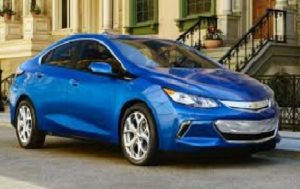 Increasing EV sales: How will U.S. new vehicle sales go from less than 1% to more than 10% plug-in electric vehicle sales? Automaker speaker panelists at EVS29 in Montreal
Increasing EV sales: How will U.S. new vehicle sales go from less than 1% to more than 10% plug-in electric vehicle sales? Automaker speaker panelists at EVS29 in Montreal 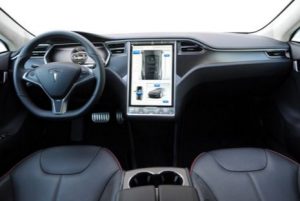 The fatality of a driver in a Tesla Model S with Autopilot is being described as the very first casualty from an autonomous vehicle technology. Here are details from the incident and where this may lead in the near future..……..
The fatality of a driver in a Tesla Model S with Autopilot is being described as the very first casualty from an autonomous vehicle technology. Here are details from the incident and where this may lead in the near future..……..